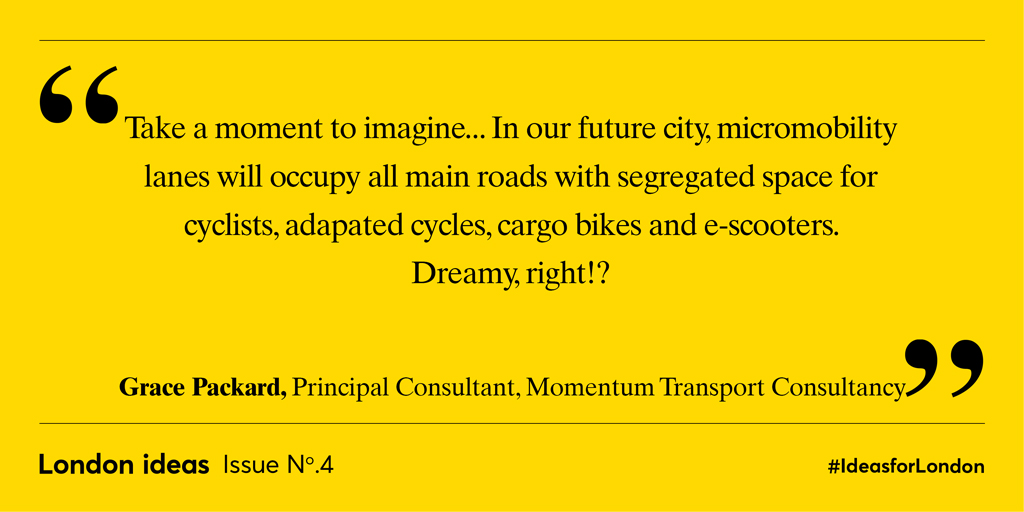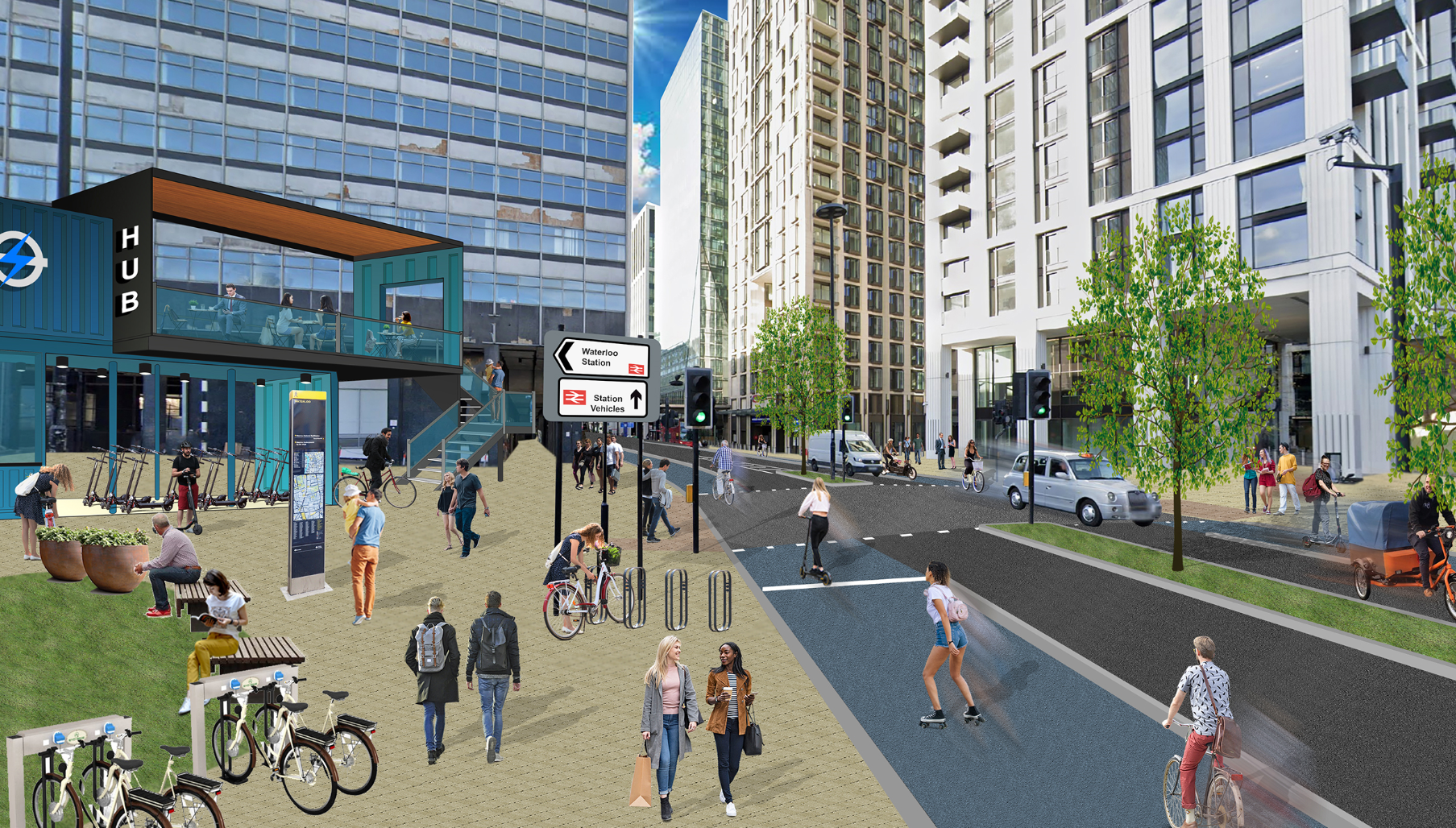
This blog was originally published by the Centre for London. Click here to read the full article on ‘Reimagining London’s transport system’.
Our micro-mobile future is already here…it just needs time to mature. The future can be difficult to imagine, but it can be easier if you think about how we can build on what is already here. Across London there are cycles of many styles and now e-scooters are gracing our streets in some areas. Yes, transport modes can be controversial. Micromobility perhaps has the furthest to go in changing attitudes, but I expect it actually has the most potential to change travel, for the better, in London.
Space is scarce in the city, but there is room aplenty in our future London for travel modes that reduce carbon-emitting and space-stealing traffic. The growth of battery use in these micromobility modes has highlighted concerns surrounding speed and safety but has also facilitated uptake. With the right regulation and management, these modes can integrate with existing traffic as an exciting new way to move in urban centres.
The growth of micromobility in London is sure to be an interesting journey, but we’ve already started. We should continue and strive to find out how these modes can seamlessly integrate into, and support, our already world-renowned transport network.
What does this future look like?
While regulation, planning policy, MaaS (Mobility as a Service) technology and shiny billboard advertisements might catch the attention of the few, installing new dedicated infrastructure, seen by thousands of people each day, is the most effective way to advertise micromobility to the many. Good infrastructure advertises itself.
Take a moment to imagine… In our future city, micromobility lanes will occupy all main roads including radial routes, providing segregated space for cyclists, adapted cycles, cargo bikes and e-scooters. Dreamy right?! I’ll continue… On these routes, general traffic will travel at a maximum of 20 miles per hour and skilled e-cargo bike users who might prefer to use these lanes will do so without being over or undertaken by other vehicles. At junctions, users of micromobility lanes will be prioritised, while advanced start lines will be located at all other junctions. The network will have clear and regular signage, both on routes and within transport hubs helping infrequent users such as tourists and other visitors to get around. Where appropriate, residential streets will be closed to through traffic and buses, taxis and freight vehicles like e-cargo bikes and small electric vans will use a single lane in each direction on main roads. Shared micromobility solutions will be provided for public transport users at transport hubs including train stations and mobility hubs, while charging and parking infrastructure for privately owned micromobility vehicles will be provided in abundance in a way that complements the surrounding public realm. These hubs will be places for people to meet, perhaps enjoy a coffee and make a seamless change from one travel mode to another. Retail units inside train stations will provide secure, long-term parking, charging and repair services providing users with peace of mind.
All users will be confident to make journeys by these modes and above all, micromobility will be convenient to use, both for personal use and for logistics services. The movement away from the unnecessary use of motor vehicles should be easy and with the right actions, it can be.
Apply this vision to Waterloo station, and here we have it:

Getting there
It takes more than good design and sturdy cement to deliver this future. The building blocks of good design, planning regulation, investment, and consensus amongst policymakers and users alike, can be the hardest to achieve, but once this is overcome, an optimistic micro-mobile future in London might not be too far away.
This vision is achievable and already in train. The optimism lies in how soon this can happen. We’re already starting to see change on our streets and clear-cut benefits are emerging. As we’re reminded of the threat of climate change, more of us recognise that the need is to act now. Let’s find this optimistic future sooner rather than later


